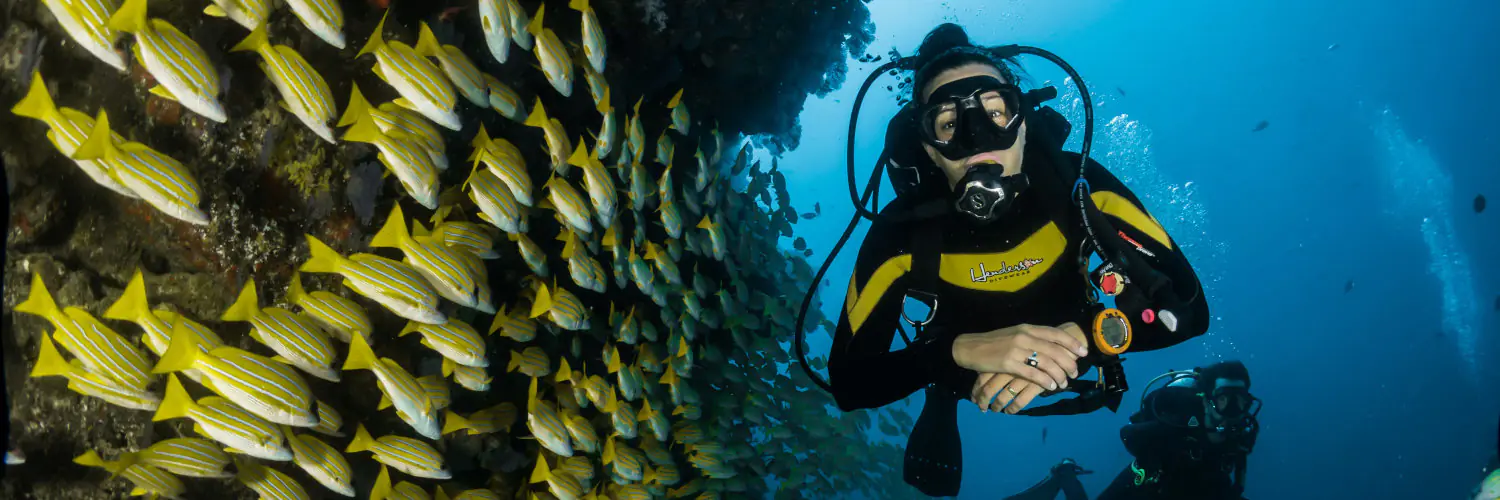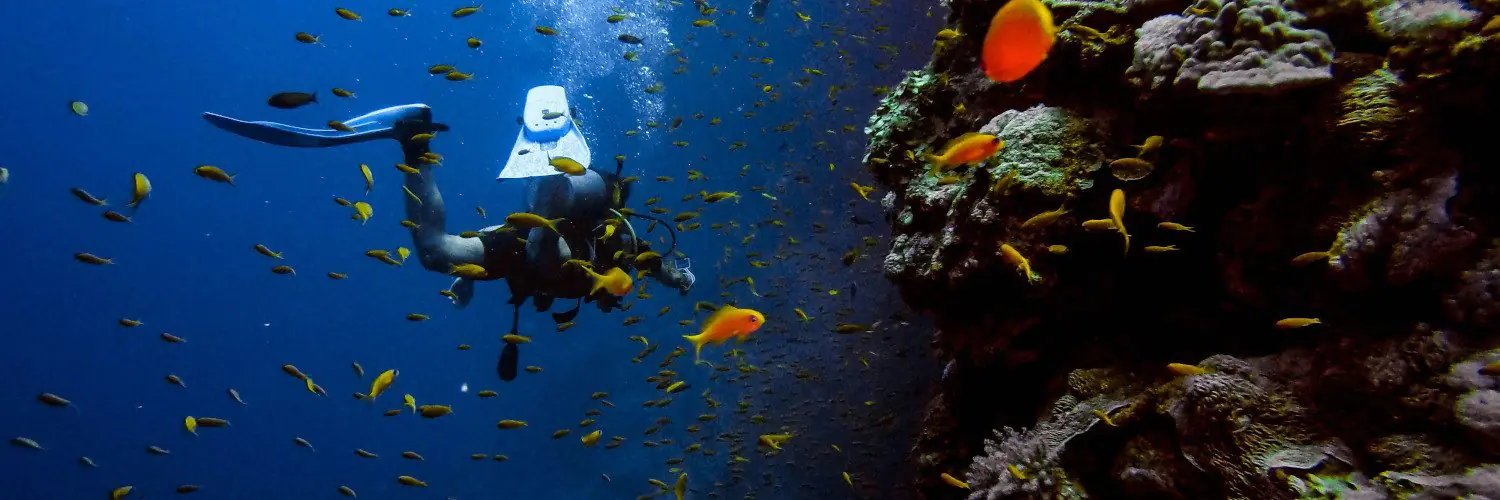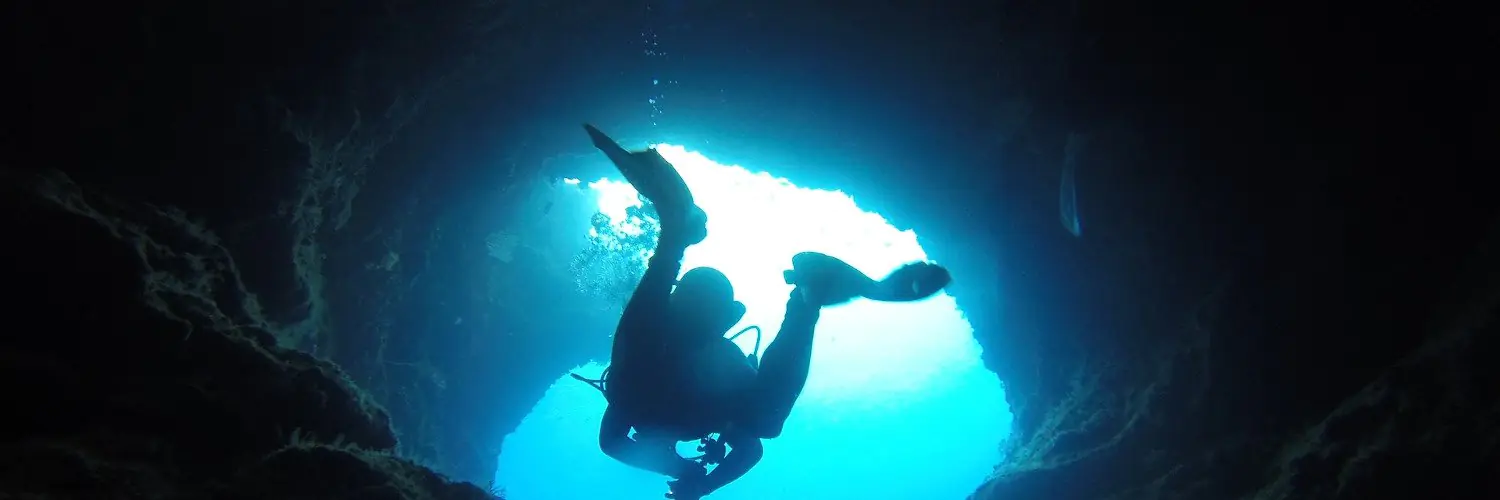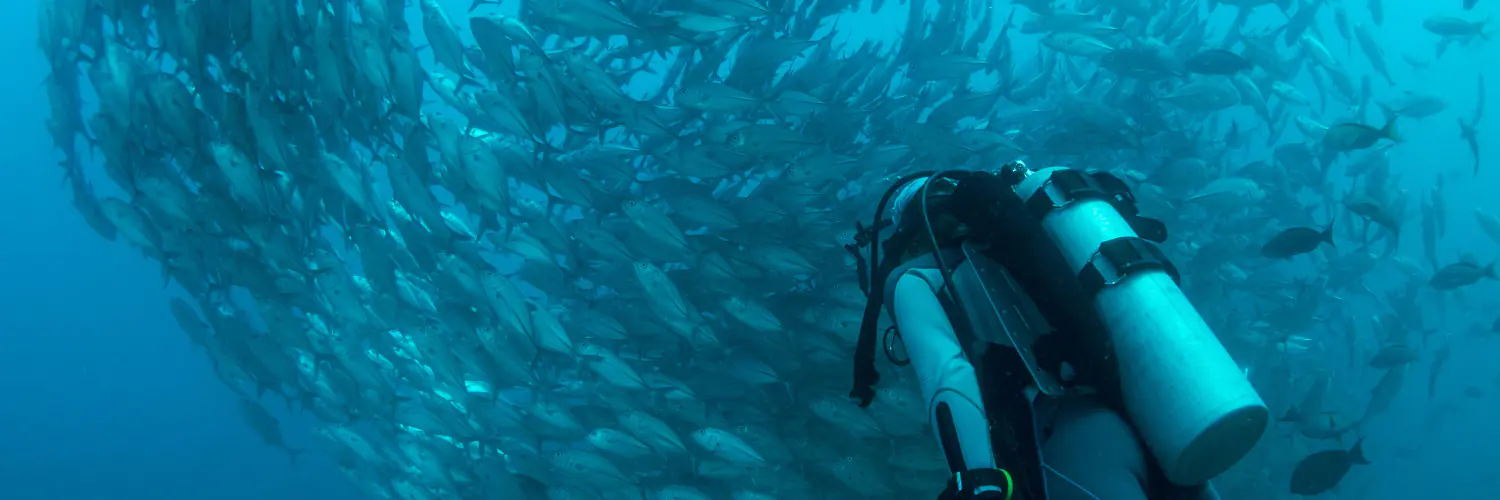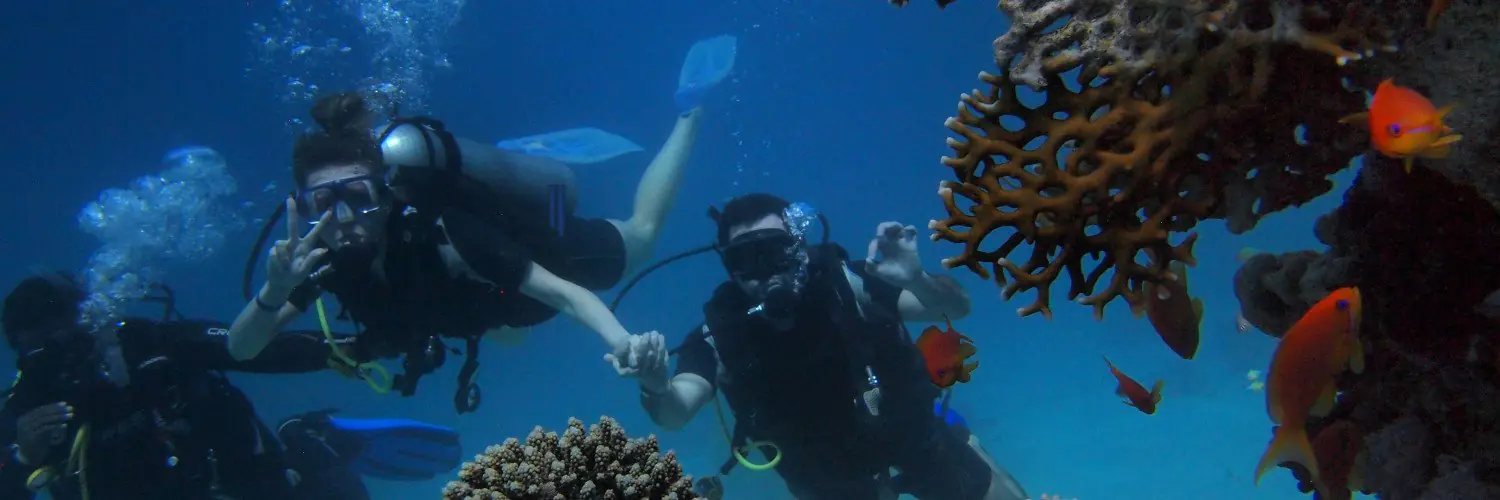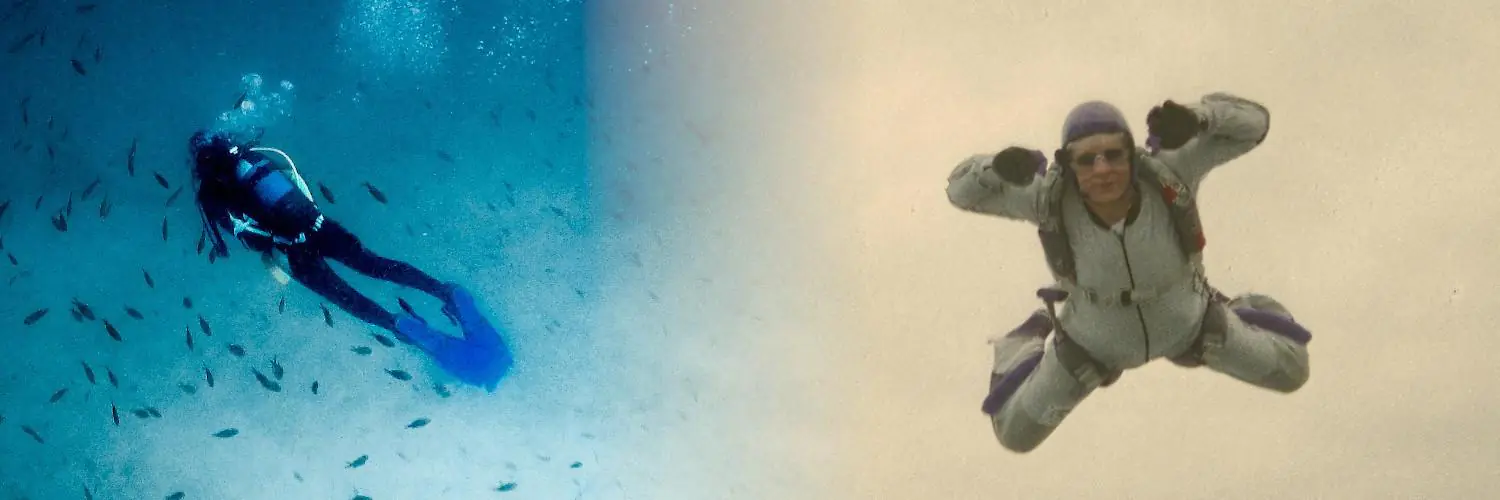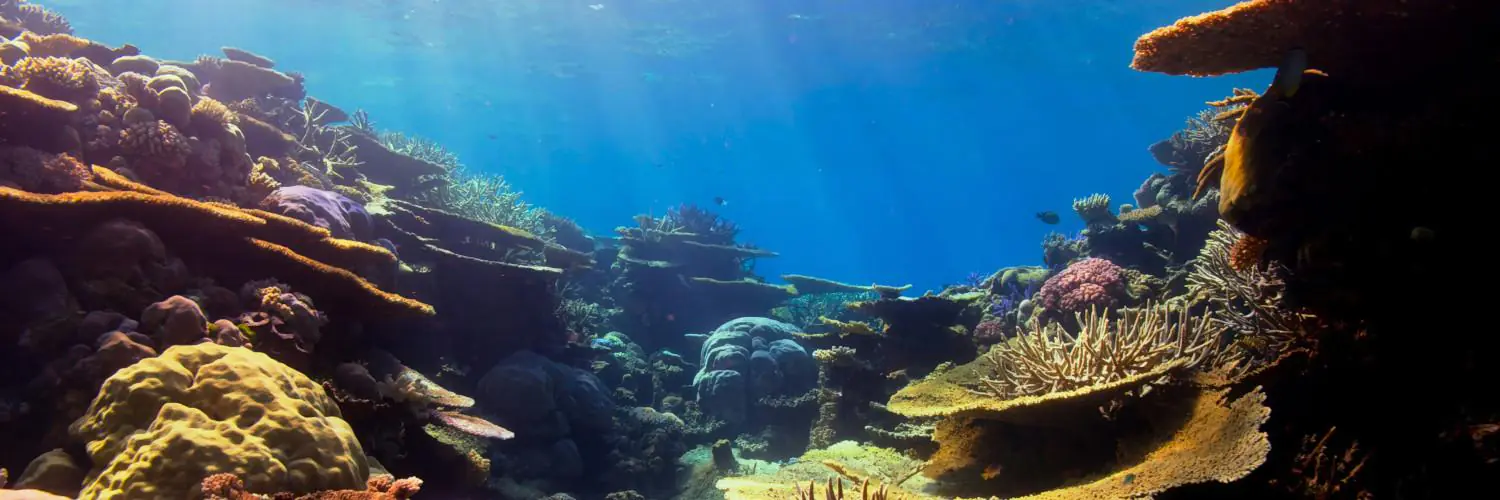Free diving, the practice of diving underwater without the assistance of breathing apparatus like scuba gear, is a unique and challenging discipline that tests the limits of the human body. It is an activity that attracts adventurous individuals who seek to explore the ocean’s depths without the encumbrance of heavy equipment. The depth to which a person can safely dive without scuba gear depends on their training, physical conditioning, and experience. Most recreational free divers can reach depths of around 12-18 meters, but this can extend to greater depths with extensive training and proper safety measures.
The human body faces increasing pressure as it descends below the water’s surface, which poses risks and challenges that must be carefully managed. Free divers utilize specific breathing techniques and rigorous training to enhance their ability to dive deeper while holding their breath. The world record for the deepest free dive without tanks is a testament to the extraordinary capabilities of trained individuals, with a depth of 214 meters achieved by Herbert Nitsch in 2007.
Deep diving into the ocean without scuba gear is not merely about setting records; it is also about understanding the risks involved and the limits of human endurance. Each dive requires meticulous preparation and awareness of one’s own limits. With the ocean being a vast and often unpredictable environment, safety is paramount, ensuring that free divers can enjoy the experience while minimizing danger.
Table of Contents
Fundamentals of Free Diving
Free diving is a form of underwater diving that relies on the diver’s ability to hold their breath until resurfacing rather than the use of a breathing apparatus like scuba gear. It emphasizes the development of lung capacity and proper use of equipment to explore aquatic depths safely.
Understanding Breath-Hold Diving
Breath-hold diving, the essence of free diving, requires a combination of breathing techniques and lung capacity enhancement. Divers train to increase their lung volume and efficiency in oxygen usage. By practicing controlled and deep breathing methods, they extend the amount of time they can spend underwater on a single breath. Free diving is not simply about staying underwater for as long as possible; it’s also about knowing one’s limits and the importance of ascending before oxygen is depleted.
Key Equipment for Free Diving
Free diving mandates minimal but specific gear to ensure efficiency and safety. This includes:
- Fins: Longer than typical snorkeling fins, they add propulsion and enable deeper dives.
- Mask: A low-volume mask improves equalization and visibility.
- Snorkel: Used at the surface to conserve oxygen before a dive, but often removed during the dive itself.
- Wetsuit: Provides temperature insulation and, in some cases, additional buoyancy.
- Weight Belt: Helps divers achieve neutral buoyancy at desired depths.
Each piece of equipment supports the diver’s ability to maximize their experience under the confines of their breath-holding capabilities. Proper use and selection of these items are crucial for a successful and safe free diving endeavor.
Physiological Considerations
Exploring the underwater realm without the aid of scuba gear relies heavily on understanding the human body’s physiological responses to increased water pressure and the need for efficient use of oxygen.
The Body’s Adaptation to Pressure
Pressure dramatically increases as a diver descends into the water, which can affect various body functions. A significant concern is how blood and brain are impacted by this change. Increasing pressure can lead to a physiological response known as peripheral vasoconstriction, which redirects blood from the limbs to the core to protect vital organs. Divers must be aware of the body’s limitations and the onset of any symptoms like dizziness that may indicate a problem.
- Heart Rate: Typically decreases as an adaptive response to conserve oxygen.
- Oxygen Toxicity: A risk at extreme depths due to increased partial pressures of oxygen in the lungs.
Breath-Holding and Oxygen Use
When breathing underwater without tanks, the duration a diver can stay submerged is dictated by their capacity to hold their breath. Successful free divers train to enhance the efficiency of oxygen use by their body, lowering their resting heartbeat and optimizing breath-holding techniques.
- Brain Health: Adequate oxygen supply is critical to maintain brain function and avoid hypoxia.
- Instructions for Divers:
- Take a deep, calm breath before submersion to maximize lung capacity.
- Consciously relax to lower heart rate and promote oxygen conservation.
These physiological considerations are essential for divers to understand and respect the body’s responses to the underwater environment to maintain safety and health.
Safety and Risks in Depth Exploration
Exploring the depths of the ocean without the aid of scuba gear involves significant risks, and safety measures are critical to prevent accidents. Divers must be aware of their maximum depth limits and the potential for serious health concerns, such as decompression sickness and shallow water blackout.
Common Dangers of Deep Diving
- Nitrogen Narcosis: Occurs at depths usually beyond 30 meters (100 feet), causing disorientation and impairing judgment, which can lead to risky decisions.
- Shallow Water Blackout: Caused by hypoxia upon ascending, leading to unconsciousness and sometimes fatal outcomes.
- Barotrauma: Injury caused by pressure changes affecting ear and sinus cavities.
- Panic and Anxiety: These can compromise a diver’s ability to respond to situations rationally, increasing the risk of accidents.
To mitigate these risks, divers practice breath-hold diving within their limits, never diving alone, and gradually increasing dive depth to build tolerance and skill.
Prevention of Decompression Sickness and the Bends
Decompression Sickness (DCS), commonly known as the bends, results from rapid ascent causing nitrogen bubbles to form in tissues and blood. To prevent DCS:
- Limit Dive Depth: Stay within the recommended recreational limits of 12-18 meters (40-60 feet) for free-diving without special training.
- Controlled Ascent: Ascend slowly, allowing nitrogen to be expelled from the body safely.
- Safety Stops: Perform safety stops, pausing for several minutes at certain depths to allow additional nitrogen release.
Employing these measures reduces the risk of decompression sickness and ensures safer diving experiences.
World Records and Human Limits
The realm of free diving tests the boundaries of human capability, with record-breakers like Herbert Nitsch, William Trubridge, and Ahmed Gabr pushing the depths one can reach without scuba gear.
Record-Breaking Free Dives
- Herbert Nitsch: Known as the “Deepest Man on Earth”, Herbert Nitsch set a world record in free diving by reaching a depth of 214 meters in 2007.
- William Trubridge: He is another renowned free diver who has set multiple world records in the discipline, often in the “Constant Weight Without Fins” category.
- Ahmed Gabr: Holds the record for the deepest scuba dive at 332 meters in 2014, which was also achieved without the use of a breathing apparatus.
The Science Behind Extreme Depths
Understanding the science behind deep free dives is crucial for both safety and advancement in the sport:
- Depth Limit: The non-assisted free diving depth limit for most people is about 60 feet (18.28 meters) without specialized training.
- Extreme Conditions: Diving beyond the recommended limits requires extensive preparation to cope with the increased pressure and reduced oxygen levels.
- Records and Safety: While divers strive to push boundaries, safety remains a primary concern, as diving beyond one’s limit without proper measures can result in serious injury or death.
Advanced Free Diving Disciplines
Free diving advances well beyond recreational limits through disciplined training and certification, allowing divers to explore the marine world and engage in competitive sports.
Competitive Free Diving
Competitive free diving is a sport where divers attempt to achieve great depths, longer times, or distances on a single breath, without the use of scuba equipment. Certification bodies like AIDA International and PADI offer structured training programs to help divers safely push their limits. The diver’s experience and rigorous training can lead to participation in competitions, which often have categories such as static apnea, dynamic apnea, and constant weight free dives. Records are meticulously documented, with the current record for depth in an unassisted free dive standing at an impressive 102 meters (335 feet). Competitors are rewarded for their discipline and mastery over their bodies in high-pressure underwater environments.
Exploring Reefs, Wrecks, and Caves
Free divers with advanced training also explore underwater landscapes such as reefs, shipwrecks, and cave systems. They are often attracted to the serenity and complex ecosystems of coral reefs, the historical allure of sunken wrecks, and the enigmatic passages of underwater caves. Each environment poses unique challenges and requires special equipment such as low-volume masks, long fins, and sometimes guide lines for navigating caves. Advanced divers often hold a PADI Free Diver certification or equivalent, ensuring they possess the knowledge to explore these environments safely. These individuals develop their skills to interact with marine life and respect the oceans, all while pushing the boundaries of recreational diving without the aid of breathing apparatus.

